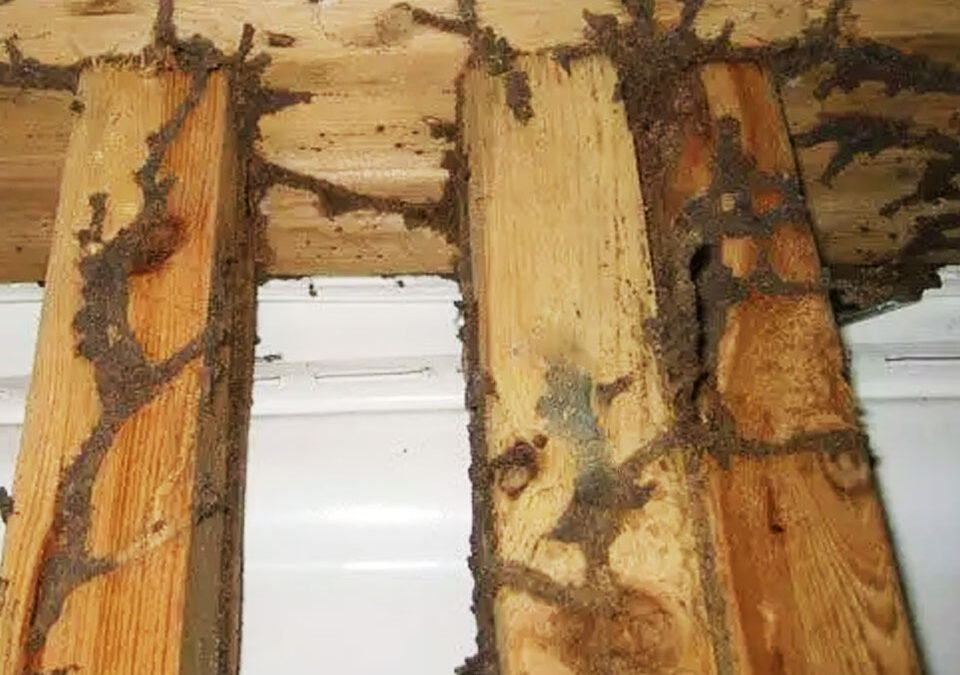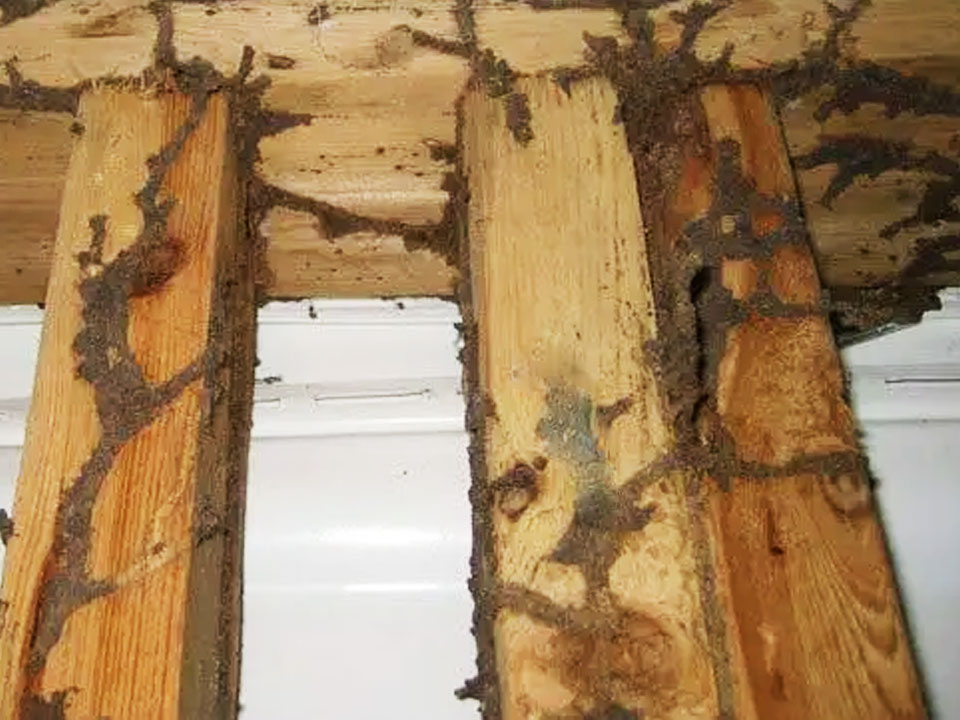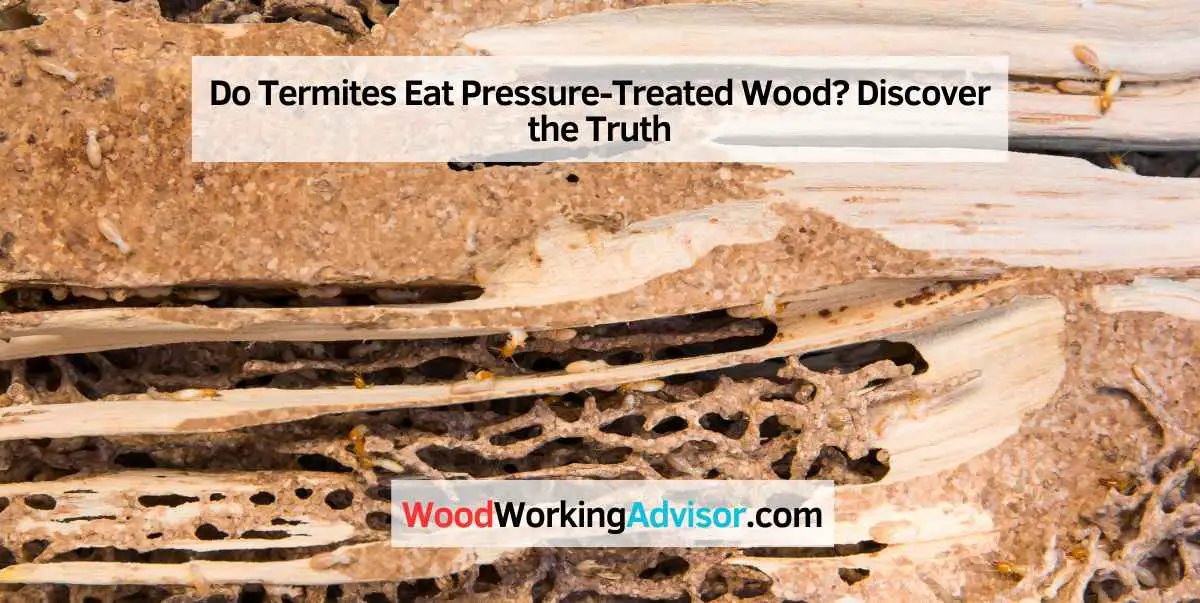Termites do not typically eat pressure-treated wood due to the chemicals used in its treatment processes. However, it’s essential to note that the effectiveness of pressure-treated wood in repelling termites can diminish over time, especially if the wood is continuously exposed to moisture and elements that can degrade the protective chemicals.
Termites are notorious for causing extensive damage to wooden structures, making it crucial to understand their behavior and the effectiveness of different types of wood treatments in deterring them. We will explore the complex relationship between termites and pressure-treated wood, shedding light on the reasons behind their aversion to this type of wood and the factors that can impact its resistance to termite infestation over time.
Understanding these dynamics can help homeowners and builders make informed decisions about the use of pressure-treated wood in construction and termite prevention strategies.
The Relationship Between Termites And Pressure-treated Wood
Termites are known for their ability to cause extensive damage to wooden structures, making it essential to understand their relationship with pressure-treated wood. This post will delve into the specifics of this relationship, shedding light on the interaction between termites and pressure-treated wood.
What Is Pressure-treated Wood?
Pressure-treated wood is a type of lumber that has been treated with chemical preservatives to protect it from decay and insect damage. The process involves placing the wood in a sealed chamber and applying pressure to force preservatives into the wood’s cellular structure, making it resistant to rot and insect infestations. This treatment significantly prolongs the life of the wood and makes it an attractive option for outdoor and structural applications.
Termite Diet Preferences
Termites feed on cellulose, the main component of plant cell walls, which is found in wood, paper, and other plant-based materials. While termites are known for their voracious appetite for untreated wood, pressure-treated wood contains chemical compounds, such as copper, arsenic, or borate, that are toxic to termites. As a result, termites are generally deterred from feeding on pressure-treated wood, making it a less appealing food source for these destructive pests.

Credit: www.terminix.com
Factors Influencing Termite Feeding Behavior
Factors influencing termite feeding behavior can vary, but when it comes to pressure-treated wood, termites have been observed to eat it. These pests can still damage structures even if the wood has been treated.
Factors influencing termite feeding behavior:
Termites are known for their destructive feeding habits, posing a significant threat to wooden structures. When it comes to pressure-treated wood, one might wonder if these resilient pests are able to devour it. It’s essential to understand the chemical composition of pressure-treated wood and the effects of preservatives on termite feeding.
Chemical composition of pressure-treated wood
Pressure-treated wood is infused with preservatives such as copper, chromium, and arsenic to enhance its resistance to decay and termite infestation. These preservatives are forced into the wood fibers under pressure, creating a barrier against termites and other wood-damaging organisms. The chemical composition of pressure-treated wood plays a crucial role in deterring termite feeding.
Effects of preservatives on termite feeding
The preservatives in pressure-treated wood act as a deterrent to termite feeding by affecting their ability to digest and derive nutrition from the wood. The toxic nature of these chemicals makes the wood unpalatable and even harmful to termites. Additionally, the presence of preservatives disrupts the natural processes within the termite’s digestive system, providing further resistance against feeding.
In conclusion, the chemical composition and preservative effects of pressure-treated wood play a vital role in deterring termite feeding. Understanding these factors is essential for ensuring the long-term protection of wooden structures against termite infestation.
Exploring The Myth: Do Termites Actually Eat Pressure-treated Wood?
Unraveling the mystery: do termites devour pressure-treated wood? Surprisingly, these insects can still damage it, posing a silent threat to wooden structures. Despite its chemical treatment, vigilance is crucial in protecting against termite infestations.
Research Findings
Studies have shown that termites infest pressure-treated wood despite the chemicals used to repel them.
Their ability to penetrate the wood depends on the type and concentration of the chemicals present.
Misconceptions About Termite Behavior
Contrary to popular belief, termites can still feed on pressure-treated wood over time.
Many assume that pressure treatment is a foolproof method to deter termite damage.

Credit: www.chemfreeexterminating.com
Implications For Termite Control And Prevention
When it comes to termite control and prevention, understanding the behavior of termites is crucial. One important question many homeowners ask is whether termites eat pressure-treated wood. The answer to this question has significant implications for choosing the right materials for termite-prone areas and implementing effective methods to protect against termite damage.
Choosing The Right Materials For Termite-prone Areas
When building or renovating in termite-prone areas, it’s vital to select materials that offer natural resistance to termites or can be effectively treated. Pressure-treated wood is often considered an excellent option due to its ability to withstand termite attacks. The wood is treated with chemicals that are toxic to termites, making it less appealing and more difficult for them to consume.
However, it’s important to note that pressure-treated wood is not entirely immune to termite infestations. While the chemicals provide protection to some extent, there have been cases where termites have managed to breach the treated wood and cause damage to structures. Therefore, while pressure-treated wood offers added resistance, it should still be considered as part of a comprehensive termite control strategy rather than a foolproof solution.
Effective Methods To Protect Against Termite Damage
Even though pressure-treated wood can provide some level of termite resistance, it’s crucial to implement additional measures to protect against termite damage. Here are some effective methods:
- Regular Inspections: Conduct frequent inspections to detect any termite activity early on. Look for signs of mud tubes, wood damage, or presence of swarmers, as these indicate a potential termite infestation.
- Moisture Control: Termites are attracted to moisture, so it’s essential to eliminate any excessive moisture sources around the property. Fix leaking pipes or faucets, ensure proper drainage, and keep the area around your home dry.
- Termite-Resistant Materials: Besides pressure-treated wood, consider using alternative termite-resistant materials such as concrete, metal, or composite materials. These can provide added protection against termite attacks.
- Physical Barriers: Install physical barriers like metal mesh or sand barriers during construction to prevent termite access to the structure. These barriers create a deterrent for termites, reducing the risk of infestation.
- Professional Pest Control: Engage the services of a professional pest control company experienced in termite eradication and prevention. They have the knowledge and tools to effectively treat and protect your property against termite damage.
By incorporating these methods, you can enhance termite control and prevention, working in conjunction with pressure-treated wood to safeguard your home from termite infestations.

Credit: www.chemfreeexterminating.com
Frequently Asked Questions For Do Termites Eat Pressure-treated Wood
How Long Does Pressure-treated Wood Resist Termites?
Pressure-treated wood resists termites for 10-15 years. The treatment creates a barrier that deters termite infestation. Regular inspection and maintenance can extend its termite resistance.
What Wood Is Best For Termite Resistance?
The best wood for termite resistance is naturally resistant hardwoods such as cedar, redwood, and teak. Additionally, pressure-treated wood with chemical preservatives can also provide effective termite resistance. Proper maintenance and regular inspections are vital to ensure long-term protection against termites.
What Do Termites Hate The Most?
Termites hate the most strong odors like citrus, mint, and cedar. These scents disrupt their communication and foraging abilities.
Will Treated Wood Attract Termites?
Treated wood does attract termites due to its moisture content and organic matter. Regular inspection and maintenance can help prevent termite infestation.
Conclusion
Considering the appetite of termites, pressure-treated wood offers protection. However, vigilance and maintenance are still essential to prevent any potential infestation in the long run. Overall, awareness and proactive measures are key to safeguarding your property from these destructive pests.
Stay informed and protect your investments.



One thought on “Do Termites Eat Pressure-Treated Wood? Discover the Truth”